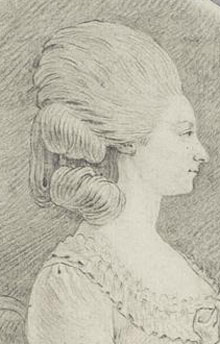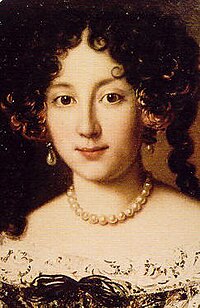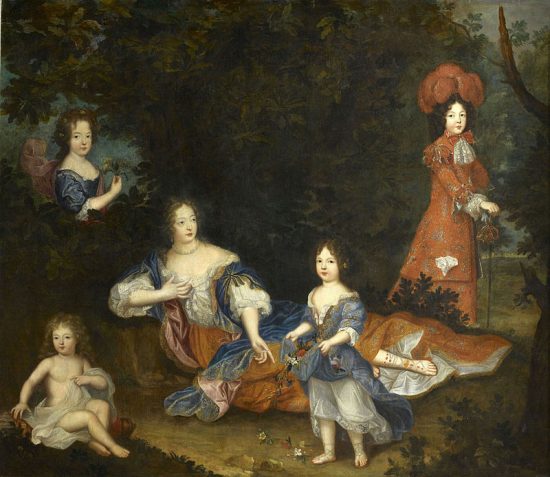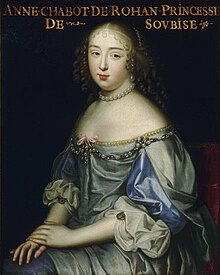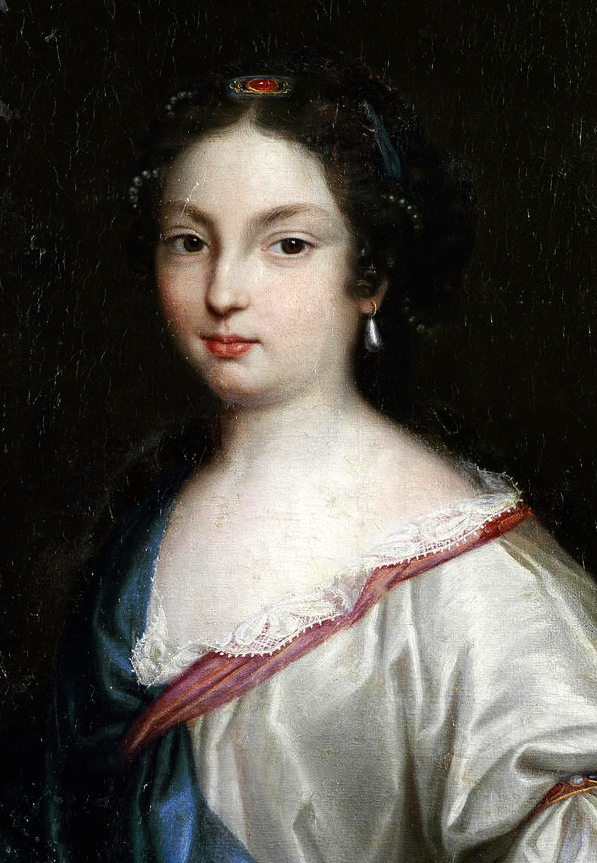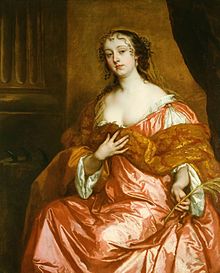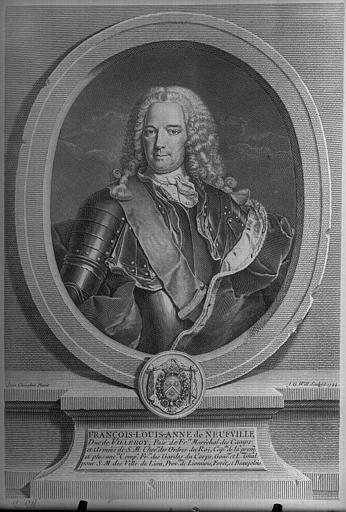Considering that some of the tenure ships overlap I have chosen to arrange it alphabetically rather than chronologically. Note that some of these were listed as Premier Gentilhomme de la Chambre du Roi while others are merely mentioned as Premier Gentilhomme de la Chambre - this is how they were originally listed and not a distinction made by me.
Amédée-Bretagne-Malo de Durfort, Duc de Duras
Tenure: 1789 and 1815
Served: Louis XVI
Other titles: none
Assisted in the marriage of Madame Royale after the execution of Louis XVI and Marie Antoinette in 1799. During the Reign of Terror he emigrated and accompanied Louis XVIII back into France in 1801. He died at Versailles in 1838.
Married to (I) Claire-Louise-Rose-Bonne-Guy de Coëtnempren de Kersaint in England (during his exile) and (II) Marie-Émilie Knusli
 |
| Amédée-Bretagne-Malo |
André-Hercule de Rosset de Rocozel, Duc de Fleury
Tenure: 1741-1788
Served: Louis XV and Louis XVI
Other titles: none
Married to Anne-Madeleine-Françoise d'Auxy de Montceaux. He spent the majority of his court life as an officer in the army.
André-Hercule-Marie-Louis de Rosse de Rocozel, Duc de Fleury
Tenure: 1788-1792
Served: Louis XVI
Other titles: none
Married to Anne-Françoise-Aimée de Franquetot de Coigny but their marriage was dissolved in 1793. He accompanied the Comte de Provence to Rome during the Reign of Terror.
Charles de Créquy-Blanchefort, Duc de Créquy
Tenure: 1643-1687
Served: Louis XIV
Other titles: Prince de Poix, Duc de Poix, Marquis de Créquy
He initially served as a soldier until his grandfather purchased the position for him. He was a trusted member of Louis XIV's household being sent with gifts both to the then Infanta Marie Thérèse and later to Bavaria for the Grande Dauphine.
 |
| Charles |
Charles-Armand-Réne de La Trémoille, Duc de La Trémoille
Tenure: 1719-1741
Served: Louis XV
Other titles: Prince de Tarente, Comte de Laval, Comte de Montfort, Duc de Thouars
Married to Marie-Hortense-Victoire de La Tour d'Auvergne
Charles-Auguste de Rochechouart, Duc de Rochechouart
Tenure: 1732-1743
Served: Louis XV
Other titles: Grandee of Spain
Married to (I) Augustine de Coëtquen and (II) Marie-Charlotte-Élisabeth de Nicolaï
He died following the battle of Dettingen on 27 June 1743 where he served as a colonel for an infantry regiment
Charles-Belgique-Hollande de La Trémoille, Duc de La Trémoille
Tenure: 1687-1709
Served: Louis XIV
Other titles: Prince de Tarente, Comte de Laval, Baron de Vitré
Married to (I) Madeleine de Créquy and (II) Anne-Armande de Saint-Gelais de Lansac
Charles-Louis-Bretagne de La Trémoille, Duc de La Trémoille
Tenure: 1709-1719
Served: Louis XIV and Louis XV
Other titles: Prince de Tarente, Comte de Montfort, Baron de Vitré, Duc de Thouars
Married to Marie-Madeleine Motier, Marquise de La Fayette
 |
| Charles-Louis-Bretagne |
Emmanuel-Céleste-Augustin de Durfort, Duc de Duras
Tenure: 1789-1791
Served: Louis XVI
Other titles: none
Married Louise-Charlotte-Henriette-Philippine de Noailles (daughter of Madame Etiquette)
He emigrated during the revolution; first, he joined the French princes who had been exiled to Germany but then travelled on to London where he died
 |
| Emmanuel-Céleste-Augustin |
Emmanuel-Félicité de Durfort, Duc de Dufort
Tenure: 1757-1789
Served: Louis XV and Louis XVI
Married to (I) Charlotte-Antoinette de La Porte-Mazarini and (II) Louise-Françoise-Maclovie-Céleste de Coëtquen
Luckily for him, he died in his own apartment at Versailles in September 1789 - just before the palace was stormed
 |
| Emmanuel-Félicité |
François de Beauvillier, Duc de Saint-Aignan
Tenure: 1649-1687
Served: Louis XIV
Other titles: none
Prior to being elevated to the rank of Duc he held the position of Captain of Monsieur's Guards and would later make a part of the king's private council.
Married to (I) Antoinette Servien de Montigny and (II) Françoise Géré de Rancé
 |
| François de Beauvillier |
François de Beauvillier de Saint-Aignan, Comte de Séry
Tenure: 1657
Served: Louis XIV
He died at the age of 29 which is why he did not serve in this capacity for long.
François-Bernard Potier de Luxembourg, Duc de Tresmes
Tenure:1704-1739
Served: Louis XV
Other titles: Duc de Gesvres, Marquis d'Annebaut, Marquis de Gandelu, Marquis de Fontenay-Mareuil
He was married to Marie-Madeleine-Genviève-Louise de Seiglière
François-Joachim-Bernard Potier de Luxembourg, Duc de Gesvres
Tenure: 1739-1757
Served: Louis XV
He was appointed governor of Paris and later he was made knight of the Order of Saint-Esprit.
He married Marie-Madeleine-Emilie Mascranni
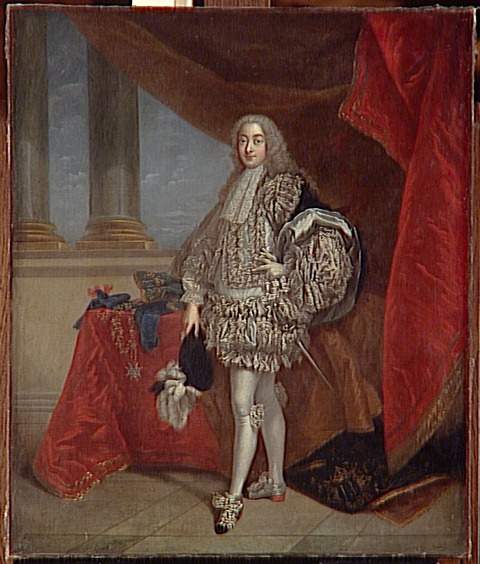 |
| François-Joachim-Bernard |
Gabriel de Rochechouart, Duc de Mortemart
Tenure: 1630-1669
Served: Louis XIV
Other titles: Prince de Tonnay-Charente
Like the Duc de Gesvres, he was made Governor of Paris in 1669. He was elevated from Marquis to Duc de Mortemart in 1663. During the Fronde he remained with the royal family and enjoyed a close relationship with Anne of Austria as well as Louis XIV - the latter rewarded his loyalty with a peerage.
He married Diane de Grandeseigne
 |
| Gabriel |
Henri de Daillon, Duc du Lude
Tenure: 1653-1669
Served: Louis XIV
He was made governor of the château de Saint-Germain-en-Laye where Louis XIV was born. Originally, he was a Comte until Louis XIV raised him to a peerage.
He married (I) Renée Élénore de Bouillé and (II) Marguerite-Louise-Suzanne de Béthune
 |
| Henri de Daillon |
Léon Potier de Luxembourg, Marquis de Gesvres
Tenure: 1670-1704
Served: Louis XIV
Other titles: Comte de Sceaux, Duc de Tresmes
He was made Governor of Paris in 1687 and made good connections at court. However, he was also very adept at making enemies. Both the Duc de Saint-Simon and the Duc de Villeroy absolutely despised him.
Married to (I) Marie-Françoise-Angélique du Val and (II) Marie-Renée de Romillé
Louis d'Aumont de Rochebaron, Duc d'Aumont
Tenure: 1704-1723
Served: Louis XIV and Louis XV
When Louis XIV made his great-grandson King of Spain the Duc d'Aumont was charged to serve him. Once he returned to France he was first given the position of ambassador to England which he held from 1702-1723. As you might have noticed this overlapped with his time in this position. That is due to the fact that he was given the title after is father's death and shared the title with the governor of Boulogne.
Married to Olympe de Brouilly
Louis de Rochechouart, Duc de Mortemart
Tenure: 1710-1729
Served: Louis XIV and Louis XV
Other titles: Grandee of Spain
In the army he was made general and participated in the siege of Barcelona in 1714. He was also a relative of Madame de Montespan.
Married to (I) Marie-Henriette de Beauvillier and (II) Marie-Charlotte-Elisabeth de Nicolai
Louis-Alexandre-Céleste d'Aumont de Rochebaron, Duc d'Aumont
Tenure: 1762-1782
Served: Louis XV and Louis XVI
Other titles: Duc de Villequier
He was made governor of bot Compiègne and Boulonnais while he held the rank of Lieutenant General in the king's army. In 1782 he was awarded with a knighthood of the Order of Saint-Esprit by Louis XVI.
Married to (I) Félicité-Louise Le Tellier and (II) Antoinette-Marguerite-Henriette de Mazade
Louis-Antoine-Sophie du Plessis de Richelieu, Duc de Fronsac
Tenure:1786-1791
Served: Louis XVI
In 1756 he was made both Premier Gentilhomme de la Chambre du Roi and a dragoon. His military career would later lead him to be both Marèchal de camp and Lieutenant General of the king's army. Madame de Pompadour had wanted to marry her daughter to the Duc de Fronsac but his father avoided the match by saying that he could not agree to marriage without the consent of the head of his house who was the Princesse de Lorraine.
Married to (I) Adélaïde-Gabrielle d'Hautefort and (II) Marie-Antoinette de Gallifret
 |
| Duc de Fronsac |
Louis-François-Armand de Vignerot du Plessis, Duc de Richelieu
Tenure: 1744-1786
Served: Louis XV and Louis XVI
He was the godson of Louis XIV (having been born during that monarch's reign). By 1712 he became a musketeer but was gravely compromised in the scandalous Cellamare conspiracy which aimed to "dethrone" the regent in 1719. Apparently, he was forgiven since he later was entrusted with several important positions including envoy to Vienna, knight of the Saint-Esprit and Marèchal de France. Significantly, he was the one who was sent to Dresden to ask for the and of Marie Josèphe de Saxe.
Married to (I) Anne-Catherine de Noailles, (II) Marie-Élisabeth de Lorraine-Harcourt and (III) Jeanne-Catherine-Josèphe de Lavaulx
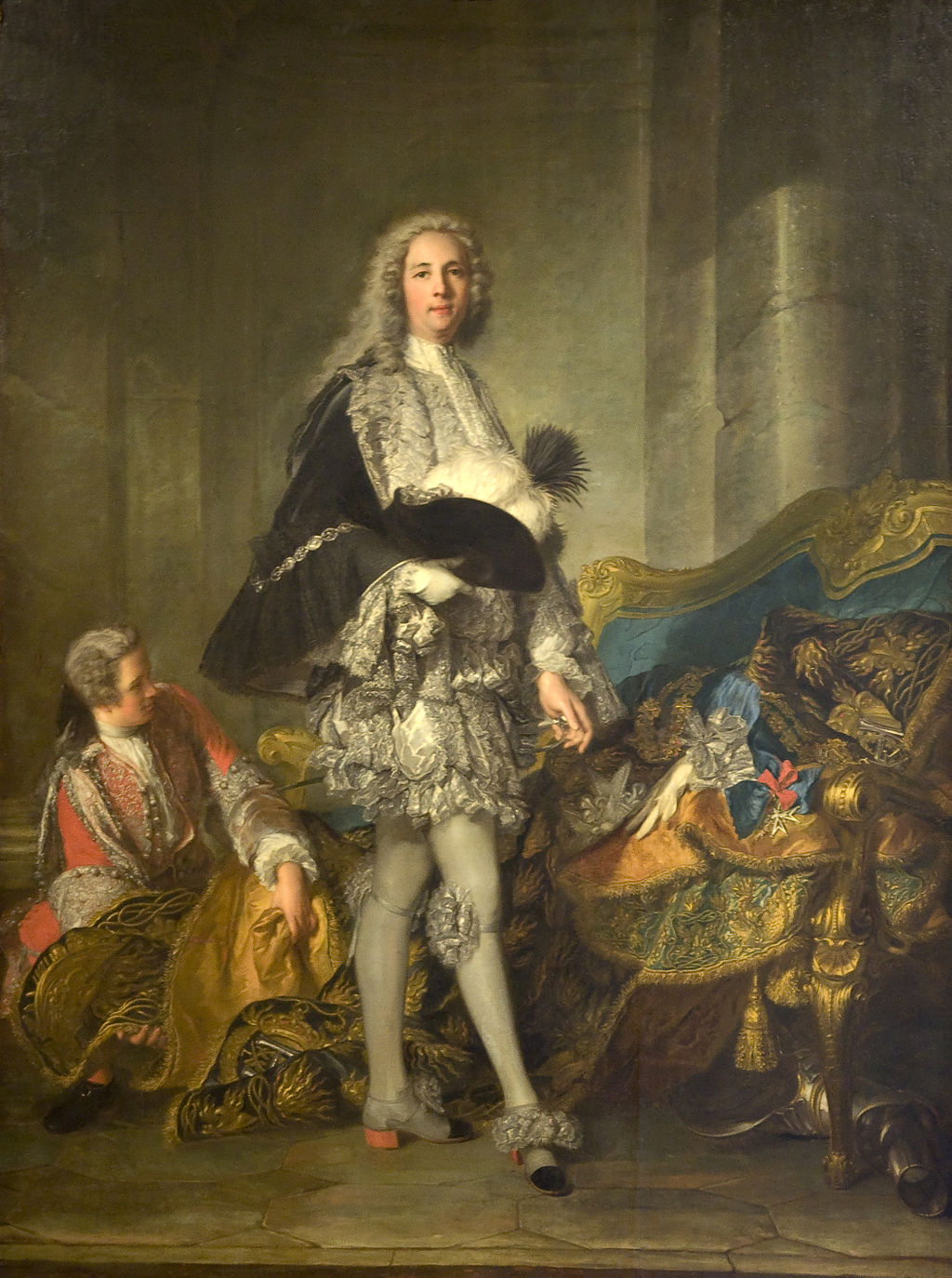 |
| Duc de Richelieu |
Louis-François-Charles-Augustin de Rochechouart, Duc de Rochechouart
Tenure: 1743
Served: Louis XV
Other titles: Duc de Mortemart and Grandee of Spain
He never actually fulfilled the duties of his title for a very good reason: he was three years old when he inherited it! Sadly, he also died in 1743.
Louis-Marie d'Aumont de Rochebaron, Duc d'Aumont
Tenure: April 1723 - November 1723
Served: Louis XV
He only got to serve in this position for seven months before dying in 1723. At the age of 15 he was made an infantry colonel.
Married to Catherine de Guiscard
Louis-Marie-Augustin d'Aumont de Rochebaron, Duc d'Aumont
Tenure:1723-1782
Served: Louis XV and Louis XVI
Other titles: Marquis de Villequier
He inherited a vast fortune which enabled him to built a big art collection. In the army he quickly rose through the ranks being both awarded the ranks of Lieutenant General and Marèchal de camp.
Married Victoire-Félicité de Durfort
Louis-Marie-Céleste de Rochebaron de Villequier, Duc d'Aumont
Tenure: 1785 and again in 1815
Served: Louis XVI
Other titles: Duc de Piennes
He emigrated during the revolution where he led a regiment of voluntary monarchist-soldiers in Spain; eventually, he would accompany Louis XVIII back to France in 1797
He married Mélanie Charlotte de la Rochechouart
Louis-Marie-Victor d'Aumont de Rochebaron, Duc d'Aumont
Tenure: 1669-1704
Served: Louis XIV
Other titles: Marquis de Chappes, Marquis de Villequier
He served as Captain of the king's guard before distinguishing himself in a military campaign in Flanders.
He married (I) Madeleine Fare Le Tellier and (II) Françoise-Angélique de La Mothe-Houdancourt
 |
| Louis-Marie-Victor |
Louis-Victor de Rochechouart, Duc de Vivonne
Tenure: 1655-1669
Served: Louis XIV
Other titles: Viceroy of Sicily
Before being appointed he had primarily been in the king's military service where he was made Marèchal de camp and Lieutenant General.
Married to Antoinette-Louise de Mesmes
 |
| Louis-Victor |
Paul de Beauvillier, Duc de Beauvillier
Tenure: 1666/1687-1710
Served: Louis XIV
Other titles: Duc de Saint-Aignan
He was made Chief of the Financial Council in 1685 and was later granted the title of First Gentleman of the Bedchamber to the Duc de Berry. Interestingly enough, he was also appointed as governor to the Duc de Bourgogne and his younger brother, the Duc d'Anjou.
He married Henriette-Louise Colbert de Seignelay
 |
| Paul de Beauvillier |
Paul-Louis de Rochechouart, Duc de Rochechouart
Tenure: 1729-1731
Served: Louis XV
Other titles: Duc de Mortemart, Grandee of Spain
He only served for a brief while because he died at the age of 21
He was married to Marie-Anne-Élisabeth de Beauvau
Réne Potier, Duc de Tresmes
Tenure: 1669-1670
Served: Louis XIV
Louis XIV sent him to England as his ambassador after having served for years either as a politician or as a soldier. Being born in 1579 he was already 80 years old when he was offered the position.
He married Marguerite de Luxembourg
 |
| Réne Potier |



